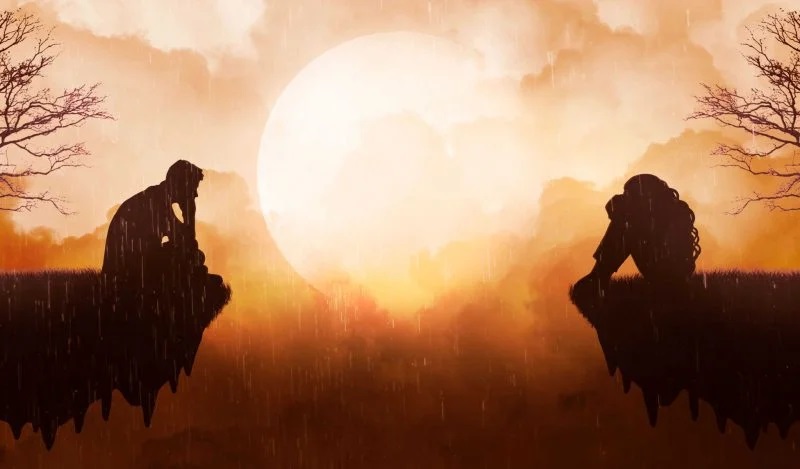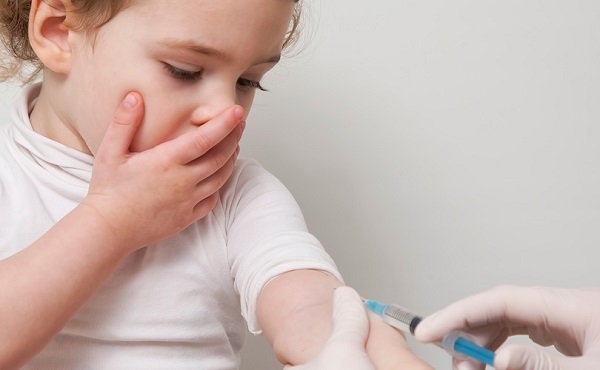Brownstone Institute
The Loneliest Generation

From the Brownstone Institute
BY
By all accounts, Americans are lonelier, more anxious, more depressed and more suicidal than ever. The Pew Research Center reports that at least 40 percent of adults faced high levels of psychological distress during covid. Alarmingly, young people are leading this trend, as they do with most trends; though with this one, their “trendiness” is a cause for serious concern.
- The suicide rate in the United States is the highest of all wealthy nations. One in 5 young women and 1 in 10 young men experience major clinical depression before age 25.
- Suicide rates among children 10 and older are the second leading cause of death among 10-24-year-olds, behind unintentional injuries and accidents.
- Close to 10 percent of kids 13-17 years-old have received an ADHD diagnosis and over 60 percent of those kids have been placed on medication. And 60 percent of them have been diagnosed with a second emotional or behavioral disorder. Thirty percent of those diagnosed with ADHD were also diagnosed with anxiety.
- Among teen girls who report suicidal thoughts, 6 percent of them traced the desire to kill themselves to Instagram. What’s worse is, Instagram — owned by Facebook parent company, Meta — knew their platform was adversely impacting teen girls and did nothing to stop it, presumably because that would interfere with the ever-increasing screen time for these young girls. In 2019, one Meta internal company slide in a presentation read: “We make body image issues worse for one in three teen girls.” But more screen time = more data to mine = more profits for social media companies.
Of note, these alarming numbers are all likely underestimates vs the current state of affairs, as they are all from BEFORE isolating covid policies took hold.
In March 2020 our kids were thrust onto screens for hours and hours each day, and were left with their only means of “socialization” to be on-line or “virtual.” They were forced to Zoom and DM and Twitch and TikTok all day every day, if they didn’t just give up altogether and hole up in their rooms under the covers, with absolutely zero interaction at all.
If young people have little hope for the future, feel isolated, disconnected and as if their very existence doesn’t matter, what hope do we have for the future as a society? And when kids are deemed to be inessential, their schooling and activities at the bottom of the list of our societal priorities, how else are they going to feel but inessential?
Recently, Democratic Connecticut Senator Chris Murphy wrote a piece for The Bulwark called “The Politics of Loneliness.” He rightly acknowledged that increased technology and social media usage have contributed to ever-accelerating social isolation which has led, in turn, to more anxiety and depression. He cites “the pandemic” as having accelerated this trend, which is the first point I’d challenge. It was pandemic policy not the virus itself that accelerated the isolation, loss of connection and a diminished sense of community.
While in the beginning of the pandemic, almost all governors shut down schools, places of worship and businesses, it was Democratic leaders who persisted in keeping them closed, or heavily restricted for over two years. I place the blame squarely with them. And so my patience with Senator Murphy showing up to pretend he has the answer is pretty much non-existent.
The ability to gather, celebrate, mourn, congregate and protest was taken away from the citizens of these left-leaning locales. There were no weddings, graduations, proms, holiday celebrations, funerals, AA meetings or in-person work with water cooler conversations. And then, we were lonely. And Democratic political leaders had the gall to weaponize our loneliness against us. We were demonized and told we were selfish to even want these things. If we craved in-person connection, we were labeled murderers and grandma-killers, creating shame for desiring connection at all. We were vilified for being HUMAN.
The “solution” they sold us: stop being so self-centered; go online more (Zoom cocktail hour anyone?); and drug yourself and your kids (if Zoom alone isn’t cutting it.)
And kids suffered from the most egregious restrictions and harms. Outdoor playgrounds were closed in San Francisco for more than 8 months. Playgrounds! Basketball hoops were removed from backboards and skate ramps were filled with sand, but golfers were permitted to hit the links. San Francisco is the city with the fewest children per capita in America. Gee, I wonder why?
Is it any surprise that young people became even more depressed and despondent during lockdowns? What is a life but the sum of life markers, milestones and everyday activities? When a child has no idea when the forced isolation will end — when relief might be granted from these authoritarian dictates — how do they cobble together a life with any semblance of hope for a meaningful non-virtual existence?
Closed schools shut children off from any sense of community. As Ellie O’Malley, a mom in Oakland whose daughter Scarlett has suffered grievous mental health impacts from the public school closures, said in an interview for a documentary film I am making:
“Schools are more than the sum of their parts and more than education. They’re more than just this teacher to student knowledge. They’re about community. They’re about the ups and downs of life and how you deal with them and having practice dealing with them in a safe setting where you might have a crisis, but it’s okay because a teacher reassures you or a friend and you have this web of community around you. And without that, when that disappeared for kids, there was just a void.”
Ellie’s daughter, Scarlett Nolan, who spent months hospitalized for her emotional and mental distress, reinforced this when she explained what school closures were like for her:
”You’re supposed to have school. It’s supposed to be your life. School is supposed to be your life from kindergarten to senior year. That’s your education. You have your friends there, you find yourself there. You find how you want to be when you grow up there. And without that, I lost completely who I was. Everything who I was. I wasn’t that person that worked to get straight A’s anymore. I didn’t care…It’s not real life. Why should I care?”
Jim Kuczo of Fairfield, Connecticut lost his son to suicide in 2021. He told me:
”You cannot treat kids like prisoners and expect them to be okay. I think that our leaders put most of the burden on children.”
San Francisco high school graduate, Am’Brianna Daniels, reiterated these same themes:
”I had very little motivation to actually get up, get on Zoom and attend class. And then I think coming up on the year anniversary of the initial lockdown [March 2021] and then the lack of social interaction is kind of what took a toll on my mental health since I am such a social person.”
And here’s where I really take issue with Senator Murphy’s recommendation: he claims that there is a role for government policy to reverse this troubling trend.
It’s a case of the arsonists wanting to be given the job of putting out the fire that they themselves started!
No thank you. Stay out of our lives and our kids’ lives. You’ve done enough damage.
Government actions started us on this trajectory well before covid and lockdowns. Cozy relationships with Big Tech and Big Pharma led to highly addictive social media practices for the purpose of data harvesting, censorship on social media, over-prescribed drugs for our children — putting them on a path to a lifetime of medicalization, and unsafe use of prescription drugs overall (remember, it was the FDA who granted Purdue Pharma the “non-addictive” label for OxyContin).
The collusion between government and Big Pharma and Big Tech got us into this situation. At every step, whether it was a disregard for minors’ well-being (TikTok, Instagram) or over-regulation in the form of vaccine mandates and forced Zoom school, the government has colluded and supported Tech and Pharma to increase the profits of these companies. And put our kids last.
Forgive me if I don’t want your help “fixing” the thing you broke.
Leave us alone. No more interventions. When we let you in, you ruin it. We’ll take the reins from here, thanks.
Moms and dads — put down your phones, go for a walk, play with your kids, talk to your children, tell your teens they need to get a job or join a sports team or the debate club, encourage them to go out into the world and do whatever it is that they want to do.
We decide how we spend our time, who we see, when we see them, and how many people are in the room. Our time, our kids, our choice.
Senator Murphy, your help is not needed. You make it worse, not better. Leave us, and our kids, alone.
Republished from the author’s Substack
Brownstone Institute
The Unmasking of Vaccine Science

From the Brownstone Institute
By
I recently purchased Aaron Siri’s new book Vaccines, Amen. As I flipped though the pages, I noticed a section devoted to his now-famous deposition of Dr Stanley Plotkin, the “godfather” of vaccines.
I’d seen viral clips circulating on social media, but I had never taken the time to read the full transcript — until now.
Siri’s interrogation was methodical and unflinching…a masterclass in extracting uncomfortable truths.
A Legal Showdown
In January 2018, Dr Stanley Plotkin, a towering figure in immunology and co-developer of the rubella vaccine, was deposed under oath in Pennsylvania by attorney Aaron Siri.
The case stemmed from a custody dispute in Michigan, where divorced parents disagreed over whether their daughter should be vaccinated. Plotkin had agreed to testify in support of vaccination on behalf of the father.
What followed over the next nine hours, captured in a 400-page transcript, was extraordinary.
Plotkin’s testimony revealed ethical blind spots, scientific hubris, and a troubling indifference to vaccine safety data.
He mocked religious objectors, defended experiments on mentally disabled children, and dismissed glaring weaknesses in vaccine surveillance systems.
A System Built on Conflicts
From the outset, Plotkin admitted to a web of industry entanglements.
He confirmed receiving payments from Merck, Sanofi, GSK, Pfizer, and several biotech firms. These were not occasional consultancies but long-standing financial relationships with the very manufacturers of the vaccines he promoted.
Plotkin appeared taken aback when Siri questioned his financial windfall from royalties on products like RotaTeq, and expressed surprise at the “tone” of the deposition.
Siri pressed on: “You didn’t anticipate that your financial dealings with those companies would be relevant?”
Plotkin replied: “I guess, no, I did not perceive that that was relevant to my opinion as to whether a child should receive vaccines.”
The man entrusted with shaping national vaccine policy had a direct financial stake in its expansion, yet he brushed it aside as irrelevant.
Contempt for Religious Dissent
Siri questioned Plotkin on his past statements, including one in which he described vaccine critics as “religious zealots who believe that the will of God includes death and disease.”
Siri asked whether he stood by that statement. Plotkin replied emphatically, “I absolutely do.”
Plotkin was not interested in ethical pluralism or accommodating divergent moral frameworks. For him, public health was a war, and religious objectors were the enemy.
He also admitted to using human foetal cells in vaccine production — specifically WI-38, a cell line derived from an aborted foetus at three months’ gestation.
Siri asked if Plotkin had authored papers involving dozens of abortions for tissue collection. Plotkin shrugged: “I don’t remember the exact number…but quite a few.”
Plotkin regarded this as a scientific necessity, though for many people — including Catholics and Orthodox Jews — it remains a profound moral concern.
Rather than acknowledging such sensitivities, Plotkin dismissed them outright, rejecting the idea that faith-based values should influence public health policy.
That kind of absolutism, where scientific aims override moral boundaries, has since drawn criticism from ethicists and public health leaders alike.
As NIH director Jay Bhattacharya later observed during his 2025 Senate confirmation hearing, such absolutism erodes trust.
“In public health, we need to make sure the products of science are ethically acceptable to everybody,” he said. “Having alternatives that are not ethically conflicted with foetal cell lines is not just an ethical issue — it’s a public health issue.”
Safety Assumed, Not Proven
When the discussion turned to safety, Siri asked, “Are you aware of any study that compares vaccinated children to completely unvaccinated children?”
Plotkin replied that he was “not aware of well-controlled studies.”
Asked why no placebo-controlled trials had been conducted on routine childhood vaccines such as hepatitis B, Plotkin said such trials would be “ethically difficult.”
That rationale, Siri noted, creates a scientific blind spot. If trials are deemed too unethical to conduct, then gold-standard safety data — the kind required for other pharmaceuticals — simply do not exist for the full childhood vaccine schedule.
Siri pointed to one example: Merck’s hepatitis B vaccine, administered to newborns. The company had only monitored participants for adverse events for five days after injection.
Plotkin didn’t dispute it. “Five days is certainly short for follow-up,” he admitted, but claimed that “most serious events” would occur within that time frame.
Siri challenged the idea that such a narrow window could capture meaningful safety data — especially when autoimmune or neurodevelopmental effects could take weeks or months to emerge.
Siri pushed on. He asked Plotkin if the DTaP and Tdap vaccines — for diphtheria, tetanus and pertussis — could cause autism.
“I feel confident they do not,” Plotkin replied.
But when shown the Institute of Medicine’s 2011 report, which found the evidence “inadequate to accept or reject” a causal link between DTaP and autism, Plotkin countered, “Yes, but the point is that there were no studies showing that it does cause autism.”
In that moment, Plotkin embraced a fallacy: treating the absence of evidence as evidence of absence.
“You’re making assumptions, Dr Plotkin,” Siri challenged. “It would be a bit premature to make the unequivocal, sweeping statement that vaccines do not cause autism, correct?”
Plotkin relented. “As a scientist, I would say that I do not have evidence one way or the other.”
The MMR
The deposition also exposed the fragile foundations of the measles, mumps, and rubella (MMR) vaccine.
When Siri asked for evidence of randomised, placebo-controlled trials conducted before MMR’s licensing, Plotkin pushed back: “To say that it hasn’t been tested is absolute nonsense,” he said, claiming it had been studied “extensively.”
Pressed to cite a specific trial, Plotkin couldn’t name one. Instead, he gestured to his own 1,800-page textbook: “You can find them in this book, if you wish.”
Siri replied that he wanted an actual peer-reviewed study, not a reference to Plotkin’s own book. “So you’re not willing to provide them?” he asked. “You want us to just take your word for it?”
Plotkin became visibly frustrated.
Eventually, he conceded there wasn’t a single randomised, placebo-controlled trial. “I don’t remember there being a control group for the studies, I’m recalling,” he said.
The exchange foreshadowed a broader shift in public discourse, highlighting long-standing concerns that some combination vaccines were effectively grandfathered into the schedule without adequate safety testing.
In September this year, President Trump called for the MMR vaccine to be broken up into three separate injections.
The proposal echoed a view that Andrew Wakefield had voiced decades earlier — namely, that combining all three viruses into a single shot might pose greater risk than spacing them out.
Wakefield was vilified and struck from the medical register. But now, that same question — once branded as dangerous misinformation — is set to be re-examined by the CDC’s new vaccine advisory committee, chaired by Martin Kulldorff.
The Aluminium Adjuvant Blind Spot
Siri next turned to aluminium adjuvants — the immune-activating agents used in many childhood vaccines.
When asked whether studies had compared animals injected with aluminium to those given saline, Plotkin conceded that research on their safety was limited.
Siri pressed further, asking if aluminium injected into the body could travel to the brain. Plotkin replied, “I have not seen such studies, no, or not read such studies.”
When presented with a series of papers showing that aluminium can migrate to the brain, Plotkin admitted he had not studied the issue himself, acknowledging that there were experiments “suggesting that that is possible.”
Asked whether aluminium might disrupt neurological development in children, Plotkin stated, “I’m not aware that there is evidence that aluminum disrupts the developmental processes in susceptible children.”
Taken together, these exchanges revealed a striking gap in the evidence base.
Compounds such as aluminium hydroxide and aluminium phosphate have been injected into babies for decades, yet no rigorous studies have ever evaluated their neurotoxicity against an inert placebo.
This issue returned to the spotlight in September 2025, when President Trump pledged to remove aluminium from vaccines, and world-leading researcher Dr Christopher Exley renewed calls for its complete reassessment.
A Broken Safety Net
Siri then turned to the reliability of the Vaccine Adverse Event Reporting System (VAERS) — the primary mechanism for collecting reports of vaccine-related injuries in the United States.
Did Plotkin believe most adverse events were captured in this database?
“I think…probably most are reported,” he replied.
But Siri showed him a government-commissioned study by Harvard Pilgrim, which found that fewer than 1% of vaccine adverse events are reported to VAERS.
“Yes,” Plotkin said, backtracking. “I don’t really put much faith into the VAERS system…”
Yet this is the same database officials routinely cite to claim that “vaccines are safe.”
Ironically, Plotkin himself recently co-authored a provocative editorial in the New England Journal of Medicine, conceding that vaccine safety monitoring remains grossly “inadequate.”
Experimenting on the Vulnerable
Perhaps the most chilling part of the deposition concerned Plotkin’s history of human experimentation.
“Have you ever used orphans to study an experimental vaccine?” Siri asked.
“Yes,” Plotkin replied.
“Have you ever used the mentally handicapped to study an experimental vaccine?” Siri asked.
“I don’t recollect…I wouldn’t deny that I may have done so,” Plotkin replied.
Siri cited a study conducted by Plotkin in which he had administered experimental rubella vaccines to institutionalised children who were “mentally retarded.”
Plotkin stated flippantly, “Okay well, in that case…that’s what I did.”
There was no apology, no sign of ethical reflection — just matter-of-fact acceptance.
Siri wasn’t done.
He asked if Plotkin had argued that it was better to test on those “who are human in form but not in social potential” rather than on healthy children.
Plotkin admitted to writing it.
Siri established that Plotkin had also conducted vaccine research on the babies of imprisoned mothers, and on colonised African populations.
Plotkin appeared to suggest that the scientific value of such studies outweighed the ethical lapses—an attitude that many would interpret as the classic ‘ends justify the means’ rationale.
But that logic fails the most basic test of informed consent. Siri asked whether consent had been obtained in these cases.
“I don’t remember…but I assume it was,” Plotkin said.
Assume?
This was post-Nuremberg research. And the leading vaccine developer in America couldn’t say for sure whether he had properly informed the people he experimented on.
In any other field of medicine, such lapses would be disqualifying.
A Casual Dismissal of Parental Rights
Plotkin’s indifference to experimenting on disabled children didn’t stop there.
Siri asked whether someone who declined a vaccine due to concerns about missing safety data should be labelled “anti-vax.”
Plotkin replied, “If they refused to be vaccinated themselves or refused to have their children vaccinated, I would call them an anti-vaccination person, yes.”
Plotkin was less concerned about adults making that choice for themselves, but he had no tolerance for parents making those choices for their own children.
“The situation for children is quite different,” said Plotkin, “because one is making a decision for somebody else and also making a decision that has important implications for public health.”
In Plotkin’s view, the state held greater authority than parents over a child’s medical decisions — even when the science was uncertain.
The Enabling of Figures Like Plotkin
The Plotkin deposition stands as a case study in how conflicts of interest, ideology, and deference to authority have corroded the scientific foundations of public health.
Plotkin is no fringe figure. He is celebrated, honoured, and revered. Yet he promotes vaccines that have never undergone true placebo-controlled testing, shrugs off the failures of post-market surveillance, and admits to experimenting on vulnerable populations.
This is not conjecture or conspiracy — it is sworn testimony from the man who helped build the modern vaccine program.
Now, as Health Secretary Robert F. Kennedy, Jr. reopens long-dismissed questions about aluminium adjuvants and the absence of long-term safety studies, Plotkin’s once-untouchable legacy is beginning to fray.
Republished from the author’s Substack
Brownstone Institute
Bizarre Decisions about Nicotine Pouches Lead to the Wrong Products on Shelves

From the Brownstone Institute
A walk through a dozen convenience stores in Montgomery County, Pennsylvania, says a lot about how US nicotine policy actually works. Only about one in eight nicotine-pouch products for sale is legal. The rest are unauthorized—but they’re not all the same. Some are brightly branded, with uncertain ingredients, not approved by any Western regulator, and clearly aimed at impulse buyers. Others—like Sweden’s NOAT—are the opposite: muted, well-made, adult-oriented, and already approved for sale in Europe.
Yet in the United States, NOAT has been told to stop selling. In September 2025, the Food and Drug Administration (FDA) issued the company a warning letter for offering nicotine pouches without marketing authorization. That might make sense if the products were dangerous, but they appear to be among the safest on the market: mild flavors, low nicotine levels, and recyclable paper packaging. In Europe, regulators consider them acceptable. In America, they’re banned. The decision looks, at best, strange—and possibly arbitrary.
What the Market Shows
My October 2025 audit was straightforward. I visited twelve stores and recorded every distinct pouch product visible for sale at the counter. If the item matched one of the twenty ZYN products that the FDA authorized in January, it was counted as legal. Everything else was counted as illegal.
Two of the stores told me they had recently received FDA letters and had already removed most illegal stock. The other ten stores were still dominated by unauthorized products—more than 93 percent of what was on display. Across all twelve locations, about 12 percent of products were legal ZYN, and about 88 percent were not.
The illegal share wasn’t uniform. Many of the unauthorized products were clearly high-nicotine imports with flashy names like Loop, Velo, and Zimo. These products may be fine, but some are probably high in contaminants, and a few often with very high nicotine levels. Others were subdued, plainly meant for adult users. NOAT was a good example of that second group: simple packaging, oat-based filler, restrained flavoring, and branding that makes no effort to look “cool.” It’s the kind of product any regulator serious about harm reduction would welcome.
Enforcement Works
To the FDA’s credit, enforcement does make a difference. The two stores that received official letters quickly pulled their illegal stock. That mirrors the agency’s broader efforts this year: new import alerts to detain unauthorized tobacco products at the border (see also Import Alert 98-06), and hundreds of warning letters to retailers, importers, and distributors.
But effective enforcement can’t solve a supply problem. The list of legal nicotine-pouch products is still extremely short—only a narrow range of ZYN items. Adults who want more variety, or stores that want to meet that demand, inevitably turn to gray-market suppliers. The more limited the legal catalog, the more the illegal market thrives.
Why the NOAT Decision Appears Bizarre
The FDA’s own actions make the situation hard to explain. In January 2025, it authorized twenty ZYN products after finding that they contained far fewer harmful chemicals than cigarettes and could help adult smokers switch. That was progress. But nine months later, the FDA has approved nothing else—while sending a warning letter to NOAT, arguably the least youth-oriented pouch line in the world.
The outcome is bad for legal sellers and public health. ZYN is legal; a handful of clearly risky, high-nicotine imports continue to circulate; and a mild, adult-market brand that meets European safety and labeling rules is banned. Officially, NOAT’s problem is procedural—it lacks a marketing order. But in practical terms, the FDA is punishing the very design choices it claims to value: simplicity, low appeal to minors, and clean ingredients.
This approach also ignores the differences in actual risk. Studies consistently show that nicotine pouches have far fewer toxins than cigarettes and far less variability than many vapes. The biggest pouch concerns are uneven nicotine levels and occasional traces of tobacco-specific nitrosamines, depending on manufacturing quality. The serious contamination issues—heavy metals and inconsistent dosage—belong mostly to disposable vapes, particularly the flood of unregulated imports from China. Treating all “unauthorized” products as equally bad blurs those distinctions and undermines proportional enforcement.
A Better Balance: Enforce Upstream, Widen the Legal Path
My small Montgomery County survey suggests a simple formula for improvement.
First, keep enforcement targeted and focused on suppliers, not just clerks. Warning letters clearly change behavior at the store level, but the biggest impact will come from auditing distributors and importers, and stopping bad shipments before they reach retail shelves.
Second, make compliance easy. A single-page list of authorized nicotine-pouch products—currently the twenty approved ZYN items—should be posted in every store and attached to distributor invoices. Point-of-sale systems can block barcodes for anything not on the list, and retailers could affirm, once a year, that they stock only approved items.
Third, widen the legal lane. The FDA launched a pilot program in September 2025 to speed review of new pouch applications. That program should spell out exactly what evidence is needed—chemical data, toxicology, nicotine release rates, and behavioral studies—and make timely decisions. If products like NOAT meet those standards, they should be authorized quickly. Legal competition among adult-oriented brands will crowd out the sketchy imports far faster than enforcement alone.
The Bottom Line
Enforcement matters, and the data show it works—where it happens. But the legal market is too narrow to protect consumers or encourage innovation. The current regime leaves a few ZYN products as lonely legal islands in a sea of gray-market pouches that range from sensible to reckless.
The FDA’s treatment of NOAT stands out as a case study in inconsistency: a quiet, adult-focused brand approved in Europe yet effectively banned in the US, while flashier and riskier options continue to slip through. That’s not a public-health victory; it’s a missed opportunity.
If the goal is to help adult smokers move to lower-risk products while keeping youth use low, the path forward is clear: enforce smartly, make compliance easy, and give good products a fair shot. Right now, we’re doing the first part well—but failing at the second and third. It’s time to fix that.
-

 International2 days ago
International2 days agoOttawa is still dodging the China interference threat
-

 Agriculture10 hours ago
Agriculture10 hours agoEnd Supply Management—For the Sake of Canadian Consumers
-

 Business2 days ago
Business2 days agoThere’s No Bias at CBC News, You Say? Well, OK…
-

 Automotive2 days ago
Automotive2 days agoCanada’s EV gamble is starting to backfire
-

 Alberta7 hours ago
Alberta7 hours agoAlberta Next Panel calls to reform how Canada works
-

 Digital ID8 hours ago
Digital ID8 hours agoCanadian government launches trial version of digital ID for certain licenses, permits
-

 Business5 hours ago
Business5 hours agoThe “Disruptor-in-Chief” places Canada in the crosshairs
-

 Artificial Intelligence6 hours ago
Artificial Intelligence6 hours agoUK Police Pilot AI System to Track “Suspicious” Driver Journeys










